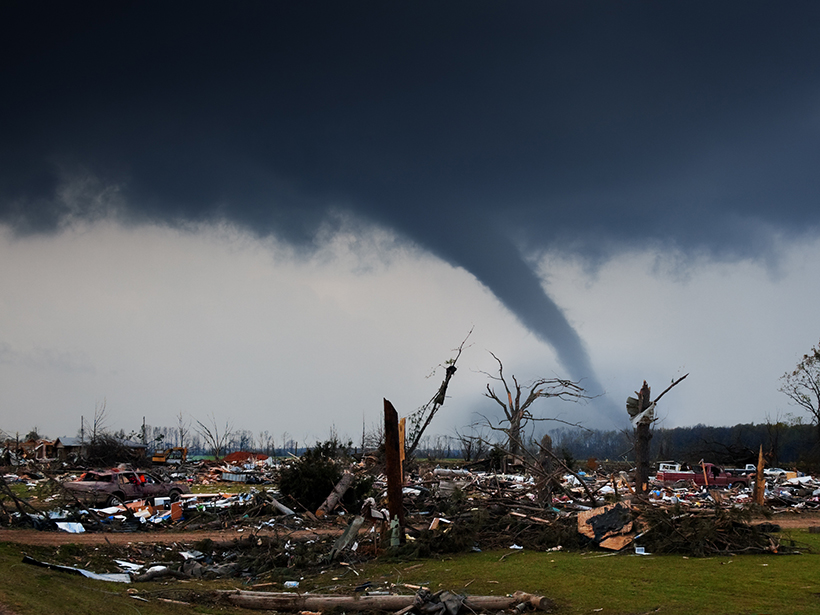The swirling winds of tornadoes can loft train cars and rip roofs from houses, leaving swathes of destruction in just minutes. Scientists now have a long-term perspective of the deadly nature of tornadoes thanks to new results of the number of tornado fatalities per capita in the United States from 1808 to 2017. The researchers found a steady rise until around World War I and then a sevenfold decline in the death rate to the present day, likely due to the evolution of technology that has improved tornado predictions, detections, and warnings.
Up and Then Down
Land rushes saw large populations move westward into tornado-prone areas—people died at a higher rate because towns sprung up that put people closer together when a tornado hit.
Ernest Agee and Lindsey Taylor, atmospheric scientists at Purdue University in West Lafayette, Ind., when this research was conducted (Taylor is now at the University of Washington in Seattle), assembled records of tornado fatalities from 1808 to 2017. Agee and Taylor mined data collected from newspapers, journal accounts, and the National Oceanic and Atmospheric Administration’s Storm Events Database for tornado-related deaths and retrieved population records from the U.S. Census Bureau. They focused on a 21-state region stretching from the Gulf of Mexico to the Canadian border that includes notorious hotbeds of tornado activity. The researchers then assembled a death per population index (DPI) by dividing the number of tornado fatalities in a given region by that region’s average population. The scientists repeated this process for each of the 21 states for six different time periods, each roughly 35 years long.
Agee and Taylor found that the average DPI value steadily increased during the first three time periods spanning from 1808 to 1915. The researchers attributed this finding to, among other factors, land rushes that saw large populations move westward into tornado-prone areas—it wasn’t simply that more people died overall but that they died at a higher rate because towns sprung up that put people closer together when a tornado hit.
But the trend started to reverse just after the turn of the 20th century and then began a sharp decline when technology like radar sprang out of World War II, followed by computers, satellite imagery, better emergency planning, and social media. In fact, the most recent DPI (for 1984 to 2017) is even lower than that recorded in the first pre–westward expansion era of 1808.
Catastrophic Events
“Even though [the overall lowered rate of tornado fatalities] is encouraging, we also have an increased risk of catastrophic events.”
But significant danger still lurks, said Agee, illustrated by the devastating events last Sunday in Alabama, when, even with advanced warning of the severe storms, 23 people died when a tornado touched down in Lee County. The researchers’ report points out the vulnerabilities of tightly packed communities built with modular or other weak structures, as was the case in Alabama, or even when tens of thousands of people gather in one spot for an event like a sports match or concert. “Even though [the overall lowered rate of tornado fatalities] is encouraging, we also have an increased risk of catastrophic events,” said Agee, who vividly remembers experiencing his first tornado in central Kentucky in the 1950s. These results were published in January in Weather, Climate, and Society.
—Katherine Kornei ([email protected]; @katherinekornei), Freelance Science Journalist
Citation:
Kornei, K. (2019), Westward expansion, technology, and tornado fatalities, Eos, 100, https://doi.org/10.1029/2019EO117635. Published on 06 March 2019.
Text © 2019. The authors. CC BY-NC-ND 3.0
Except where otherwise noted, images are subject to copyright. Any reuse without express permission from the copyright owner is prohibited.

